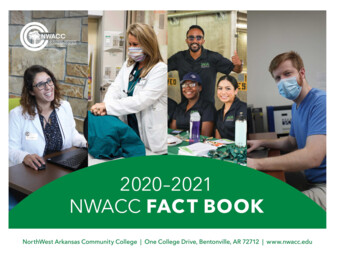
Transcription
,.
Table of ContentsTable of Contents .Introduction and Highlights OrganizationBoard of Trustees .Administration Organization Chart .History . . .Productivity Funding. . . .Accreditation .Strategic Goals . Mission and Values Statements College Facilities .Key Performance Indicators Learning Programs23-788910111212121314Degree Programs 152 Year Degrees Awarded 16Technical Certificates Awarded 17Certificates of Proficiency Awarded 18Licensure Test Results .19Student Semester Credit Hour by CIP 20Number of Sections of Courses Offered 21Number of Teaching Faculty 21Credit Hours Taught - FT & PT Faculty 22Corporate and Continuing Education .23Adult Education 24Students2018 and 2019 Headcount Summary Comparison 25Historical Headcount Summary 26Headcount Enrollment by Semester .27Headcount by Student Type .28Headcount by Majors .29-30Headcount by Race/Ethnicity 31Headcount by Residency .32Washington County Facilities Enrollment .33Headcount by Tuition Status 34Student Semester Credit Hours by Semester 35Student Semester Credit Hours by Tuition Status 36Fall SSCH and FTE Enrollment 37Annual SSCH and FTE Enrollment 38High Schools in NWACC Service Area 39Early College Experience . . 40Early College Experience - Career & Technical . .41RemediationRemediated First Time Freshmen Average ACT Composite Scores Graduation-RetentionGraduation Rates for Full-Time, First-Time Freshmen Retention Rates for All Students . .ResourcesFinancial Aid .Financial Report Summary .424344454647SummaryFaculty and Staff Counts . .48Summary of Students Served . 49Glossary 50-512
HighlightsThe Fact Book for Fall 2020 is produced by the Office ofInstitutional Research and outlines enrollment, faculty,financial and other comprehensive information for NorthWestArkansas Community College.All enrollment data in this document is based on the officialenrollment of the college at the end of the eleventh classday. All fiscal year data was collected at fiscal year end, June30, 2020. The definitions and guidelines used to compile thisinformation is provided by the Integrated PostsecondaryEducation Data System (IPEDS) and the ArkansasDepartment of Higher Education. Definitions and guidelinesunique to NWACC has a notation appearing on individualtables.Copies of this document may be found in the Office ofInstitutional Research and on the web atwww.nwacc.edu/institutional research.The Fact Book will be updated prior to December 1 each year.Inquiries and comments regarding this document may be directed to the Office of Institutional Research, NorthWest ArkansasCommunity College, One College Drive, Bentonville, AR 72712, by telephone at (479) 619-4399 or by e-mail to kpurdy@nwacc.edu orsblackwell2@nwacc.edu.3
NorthWest Arkansas Community College is a comprehensive, public two-year college that serves to empowerlives, inspire learning, and strengthen community through accessible, affordable, quality education. Faculty, staff,and administrative leadership share in the vision to positively change the lives of those we serve. NWACC'sgreatest attribute is its quality of instruction. Experts provide personalized instruction in small classes. Transfercourses are taught by instructors with a master's degree or higher.4
Highlights7,411HEADCOUNTOfficial eleventh day headcount was7,411 students, a decrease of 11.6%from Fall 2019.13,429SERVICENWACC served over 13,429students in AY20.This includes College credit Workforce Development Adult EducationFACULTY and STAFFFULL-TIMEPART-TIMEAdmin / Staff24958Faculty1533481,749RESIDENCYStudents from Bentonand Washington countiesmake up 90% of theNWACC student body.PASS RATES100% Pass Rates in Registered Nursing Physical Therapist Assistant Fire ScienceAWARDSNWACC awarded1,749 degrees and certificates inAcademic Year 2020- an increase of 16%.5
STUDENT EDIANSTUDENT AGEmale59.3%27.2% Full-Time40.7%21femaleFTETUITION STATUS3,92345.1% In-District48.5% Out-of-District4.6% Out-of-State0.8% InternationalFull-time equivalentenrollment statusdecreased 13.8% overFall of 2019STUDENTCHARACTERISTICSRESIDENCE90% of the student body reside within theNWACC service area. 54% of students residein Benton county and 36% reside inWashington county. 4.5% of students live inother parts of the state and 5.5% of studentsare from out-of-state.6
First Time Freshmen RequiringDevelopmental WorkMATHNumber requiring Remediation: 656 (49.9%)ENGLISHNumber requiring Remediation: 557 (42.4%)STUDENT TYPENew FreshmanTransfer1,314414Continuing Students2,983High School Students1,914Visiting StudentsREADINGNumber requiring Remediation: 423 (32.2%)ANY DEVELOPMENTAL PLACEMENTNumber requiring Remediation: 844 (64.2%)DEVELOPMENTAL PLACEMENT IN 3 AREASNumber requiring Remediation: 290 (22.1%)227STUDENTCHARACTERISTICSETNICITY / RACEAm Indian/Alaskan Native, 86Asian, 236Black or African American, 180Hispanic or Latino, 1,651Native Haw/Pac Islander, 39White, 4,5192 or more races, 379Unknown, 268Non-Resident Alien, 537
Board of TrusteesAdministrationMembers of the Board of Trustees of NorthWest Arkansas Community College are elected byzone in groups of three each even numbered year at the general election.Board Members as of January 1, 2020 and the district they represent:ChairMr. Todd SchwartzZone 4Grace Lutheran AcademyVice ChairMr. Ron BranscumZone 5Arvest BankSecretaryMr. Mark ScottZone 6Ozarks Community HospitalMr. Lucas PointerZone 1BOK FinancialDr. DeAnne WitherspoonZone 2Retired OptometristMs. Rachel HarrisZone 3CotyMr. Jerry VestZone 7Regions BankMr. Mauricio HerreraZone 8Herrera Law GroupMr. Joe SpiveyZone 9First National BankPresidentDr. Evelyn JorgensonVice President of Student ServicesVice President of Learning/CAODr. Todd KitchenDr. Ricky TompkinsVice President of Career and Workforce EducationMr. Tim CorneliusExecutive Director of Community & Gov't Relations and Marketing Mr. Grant HodgesVice President of Finance and AdministrationMr. Al MassriExecutive Director of AdvancementMs. Liz AndersonPresidents and Their TenureDr. Bob C. Burns(1989-2003)Dr. Becky Paneitz(2003-2013)Dr. Evelyn Jorgenson (2013- present)8
Organizational Chart*Double line box indicates Cabinet member9
19892016The NorthWest Arkansas Community College District was authorized on August 15, 1989when voters in the Rogers and Bentonville public school districts passed a 3-mil tax.NWACC becomes the largest community college in Arkansas.19902017The first classes were attended by more than 1,200 students in the fall of 1990 at highschools, chambers of commerce, municipal and leased facilities throughout the district.1995Burns Hall opened its' doors to more than 2,400 students in August 1995. The mainbuilding is a multipurpose facility on 131 acres of land at Exit 86 off Interstate 49 at thecity limits of Rogers and Bentonville, Arkansas.2003The Shewmaker Center for Workforce Technologies opened in 2003 and offerscustomized programs to area businesses.2007The Becky Paneitz Student Center opened in the Spring of 2007. A parking complexbegan serving commuters traveling to the Bentonville campus.NWACC opened Brightwater: A Center for the Study of Food in January of2017 where culinary students focus on three main areas: food as art, foodas wellness, and food as business.2019The Integrated Design Lab (IDL) opened for the Fall 2019 term. The labprovides additional space for programs within workforce, communicationand arts, and business computer information divisions.2020NWACC Washington County opened its' doors for theSpring 2020 semester. The facility houses general education, nursing,health information management, and emergency medical responseclasses.2010The opening of the Shewmaker Global Business Development Center occurred in thesummer of 2010.2013A new Health Profession building was dedicated to service in January of 2013.2014The Melba Shewmaker National Child Protection Training Center opened in Spring of2014.2015NWACC's Adult Education Program relocated to the Shewmaker Center for WorkforceTechnologies in the Summer of 2015.10
PRODUCTIVITY FUNDINGPRODUCTIVITY FUNDINGFor 2021-22 two year Collegerecommendations for productivitydistribution, NWACC had the highestcontribution to increase at 24.52%.The productivity funding model forstate-funded institutions of higherlearning is built around a set ofshared principles developed byinstitutions and aligned with goalsand objectives for post-secondarystudent attainment.OUTCOMESFocus should be on completion ofunderserved and at-risk students, andcompletions in areas of need identified bystate and local industry, and completions bythe general student population.FLEXIBILITYThe model should be adaptable in the face ofdynamic institutional and environmentalchange.COLLABORATIONIncentives for cross-institutional collaboration andreward for the successful transition of studentsacross institutions should be provided.NWACC showed the highestpercent change forrecommended funding for2020-2021 at 12.94%.FUNDING MODELGUIDING PRINCIPALSSTUDENT- CENTEREDStudents and student's needs for access to andcompletion of meaningful and quality postsecondary learning should be central to the fundingSTABILITY and TRANSITIONThe model should support short-, mid- andlong-term financial stability of the publicinstitutions of higher education, while focusingattention on outcomes and goals of the state.NWACC received thehighestrecommendation forincentive funding forFiscal Year 2021 at 1,178,718.SUPPORTING INSTITUTIONALMISSIONThe model should respect and beresponsive to the diverse set ofmissions represented by each publicinstitution of higher learning.FORMULA STRUCTUREThe model should maintain clarityand simplicity.11
NWACC Mission StatementEmpower Lives, Inspire Learning and Strengthen Community throughAccessible, Affordable, Quality Education.NWACC Vision StatementPositively changing the lives of those we serve.NWACC Values StatementIn order to accomplish our mission and goals we- Facilitate continuous learning for students and stakeholders- Cherish academic, professional and personal integrity- Respect our differences and view them as a strength- Advance knowledge through individual and team challenges- Anticipate and respond to needs by encouraging innovative ideas andtechnologies- Develop the potential of the individual to achieve excellence- Value human resources over physical resourcesStrategic GoalsLearner Community: Provide and continuously strengthen quality programsand processes that support student achievement and success.Taxpayer Community: Strive to be effective and ethical stewards of taxpayerdollars by maximizing resources and containing costs to allow affordable tuitionrates for our students.College Community: Provide an open and transparent environment wherestudents, staff, faculty, and alumni feel welcome, safe, valued, connected andinformed.Pre-K through Grade 16 Community: Develop, expand, and enhancecollaborative partnerships with local K-12 and university partners.Business and the Broader Community: Enhance partnerships with and providesupport to local business, industry and the general public by offering innovativeapproaches to curriculum, training and other relevant services.College Ends StatementsNWACC will become a premier educational provider in Northwest Arkansas bydeveloping a responsive educational delivery system customized to the needs oflearners and receiving organizations.1. For the learner community, we will:Provide expanded access to educational opportunities for the population in general,but especially for under-served learners in all age groups who are disconnected fromeducation by choice or circumstance, and will actively support student retention andcompletion.2. For the business community, we will:Enhance partnerships and collaborations with business and industry throughinnovative approaches to design, and deliver training and education.3. For the owner community (taxpayers), we will: Enhance NWACC's capacity to achieve its initiatives by diversifying its resource base. Provide educational and comprehensive programs, services, and facilities to theowner community (taxpayers).4. For the pre-kindergarten through grade 16 community, we will:Forge a systemic linkage with P-16 and university partners to achieve "seamlessness"in curriculum, technology, learner support and service delivery.5. For the college community, we will:Align the organizational infrastructure of NWACC with college growth.AccreditationOn December 15, 2020, the Institutional Actions Council of the Higher Learning Commission grantedNorthWest Arkansas Community College continued accreditation through 2029-30.12
NWACC FacilitiesMain CampusNWACC Washington CountyOne College Drive6101 Watkins AvenueBentonville, AR 72712Springdale, AR 72762479.986.4000 or 1.800.995.6922479.927.3330 or 479.936.5131NWACC Burns HallBecky Paneitz Student CenterALLPS School of Innovation (Regional Technology Center, RTC)Shewmaker Center for Workforce Technologies2305 Old Farmington Road- Adult EducationFayetteville, AR 72701- Workforce and Economic DevelopmentShewmaker Center for Global Business Development479.444.3060Center for Health ProfessionsThe Melba Shewmaker National Child Protection Training CenterIntegrated Design LabCulinaryBrightwater: A Center for the Study of Food801 SE 8th StreetBentonville, AR 7271213
Key Performance Indicators (KPIs)HLCCriteriaKey Performance Indicator/Related Strategic Goals2019-NEWKPIs2020Target2020Learner Community: Provide and continuously strengthen quality programs and processes that support studentachievement and success.4.C.1. Prior Academic Year Credit Student Headcount11,32211,3904.C.2. Fall to fall retention rate46.7%42.9%48%4.C.3. Annual Student Semester Credit Hours4.C.4. Total Degrees and Certificates Awarded-prior AY149,512151,510159,0001,6021,7491,2004.C.5. Underserved students receiving degrees and certificates2683002254.C.6. Gateway Course Success Rate62.3%70.0%4.C.7. Licensure/Certification Exam Passage Rate in Required Programs92%96%4.C.8. General Education courses reporting assessment target met82%95%100%Taxpayer Community: Strive to be effective and ethical stewards of taxpayer dollars by maximizing resources and containingcosts to allow affordable tuition rates for our students.5.A.9. Instructional Expenses as a Percentage of Total Expenditures5.A.40%10. Primary Reserve Ratio*65%College Community: Provide an open and transparent environment where students, staff, faculty, and alumni feel welcome,safe, valued, connected and informed.48%53%50%3.C.11. Employee Satisfaction3.C.12. % Minority FT faculty and staff4.C.13. Student /76/7Pre-K through Grade 16 Community: Develop, expand, and enhance collaborative partnerships with local K-12 anduniversity partners.4.C.14. Three year success rate (full-time students--graduation plus transfer)42.0%41.0%36%Business and the Broader Community: Enhance partnerships with and provide support to local business, industry and thegeneral public by offering innovative approaches to curriculum, training and other relevant services.1.D.15. Non-Credit Unduplicated headcount--prior Academic Year1.D.16. Adult Education Unduplicated headcount8376293,0001,6231,4102,600* The primary reserve ratio helps institution understand the affordability of its strategic plan. It provides a snapshot of financial strength andflexibility by indicating how long the institution could function using its expendable reserves without relying on additional net revenue generatedby operations.14
Degree Programs2 Year DegreesAssociate of Applied Science (AAS) DegreesTechnical CertificatesAccounting TechnologyEnvironmental Mgmt & Reg SciBusiness ManagementFire ScienceArtisanal FoodsEnvironmental Regulatory ScienceComputer Aided DesignFood StudiesBaking ArtsGeneral BusinessComputer Information SystemsGraphic DesignBeverage ArtsGraphic DesignConstruction TechnologyHealth Information ManagementChild Advocacy StudiesHealth Information ManagementCrime Scene Investigation (CJI*)Law EnforcementComputer Aided DesignHorticultureCriminal JusticeLaw Enforcement Administration (CJI*)Construction TechnologyIntegrated DesignEarly Childhood EducationLegal Assistant/ParalegalCrime Scene Investigation (CJI*)Law Enforcement Adm (CJI*)Electronics Technology (NTI )NursingCriminal JusticeLogistics ManagementEMT-ParamedicPhysical Therapist AssistantCulinary ArtsMediaEnvironmental & Regulatory ScienceRespiratory TherapyDental AssistingNetwork & Cyber SecurityEarly Childhood EducationPre-Health Care StudiesEMT ParamedicPre-Radiologic Imaging ServicesEntrepreneurshipRetail ManagementAssociate of Fine Arts (AFA)Associate of General StudiesCertificates of ProficiencyTransfer DegreesArtisanal FoodsEnvironmental Mgmt/GIS TechnicianAssociate of Arts (AA)Baking Arts & PastryFire ProtectionAssociate of Liberal Arts & Science (AS-LAS)Beverage ArtsForensic ScienceAS Agri, Food & Life SciencesChild Advocacy StudiesGraphic DesignAS BusinessChild Development Associate (CDA)HorticultureAS Business AdministrationCinematic StudiesHVAC ApprenticeCommunity ParamedicineJustice StudiesComputer Aided DesignLaw EnforcementConstruction TechnologyLaw Enforcement Adm (CJI*)Crime Prevention and CorrectionsMediaCrime Scene Investigation (CJI)*Nursing AideCriminal JusticeNursing AssistantCulinary ArtsPlumbing ApprenticeDental AssistantPre-Health Sciences*available in cooperation with the Criminal Justice InstituteElectrical ApprenticePre-Radiologic Imaging Services available in cooperation with Northwest Technical InstituteElectronics TechnologySafety & Health (available Online)EMT BasicWorkforce Readiness15
2 Year Degrees AwardedBy Academic 21958453091867810005671111TOTAL AAS sAS-Business AdmAAT 365153197-151419173299-TOTAL AA & AS Degrees509495705684718AAS DegreesBusiness ManagementComputer Aid Drafting and DesignComputer Information SystemsConstruction TechnologyCriminal JusticeCulinary ArtsEarly Childhood EducationElectronic TechnologyEMT-ParamedicEnvironmental Reg, Safety, and Haz MatFire Science Administration and TechGraphic DesignHealth Information ManagementHomeland Security & Emergency MgmtLaw Enforcement Adm (CJI)Legal Assistance/Paralegal StudiesNursingPhysical Therapist AssistantRespiratory TherapistTransfer DegreesGeneral EducationAssociate of Fine ArtsGeneral Studies--2472831184662Total 2 Year Degrees*7827539489971,001% Change-19%5%0%*NOTE: This table reflects only students who completed degrees between July 1 and June 30 of each academic year16
Technical Certificates AwardedBy Academic YearTechnical CertificatesAccounting TechnologyArtisanal FoodsBaking ArtsBusiness ManagementCAD: Architectural DesignCAD: Civil/Landscape DesignCAD: Mechanical DesignChild Advocacy StudiesConstruction TechnologyCriminal JusticeCulinary ArtsEarly Childhood EducationDental AssistingEmergency Medical Tech - ParamedicEntrepreneurshipEnvironmental ScienceEnvironmental Mgmt & Reg ScienceGeneral BusinessGraphic DesignHealth Information ManagementHomeland Security & Emergency MgmtHospitality ManagementLaw Enforcement Adm (CJI)Logistics ManagementNetwork & Cyber SecurityParaeducators of Special Needs LearnersPre-Health Care StudiesPre-Radiologic Imaging ServicesRetail ManagementCertificate of General StudiesGeneral StudiesTOTAL Technical 11515816148239134339421% Change153%*NOTE: This table reflects only students who completed degrees between July 1 and June 30 of each academic year17
Certificates of Proficiency AwardedBy Academic 66327-11%9441,0831,3801,6021,74916%Certificates of ProficiencyArtisinal FoodsBaking Arts1CAD: Architecture0CAD: Engineering0CAD: Mechanical Design0Child Advocacy Studies2Child Dev Associate (CDA) Training 5Cinematic Studies0Construction TechnologyCrime Prevention & Corrections3Crime Scene Investigation0Criminal Justice1Culinary Arts7Dental AssistantElectronics Technology0Emergency Medical Technology - Basic59Environmental Science0Environmental Mgmt/GIS Tech1Fire ProtectionForensic Science2Graphic Design2HVAC ApprenticeHomeland Security & Emergency Mgmt0HorticultureHospitality Management5Law Enforcement2Law Enforcement Administration 1Networking1Nursing AideNursing Assistant1Pre-Health Sciences16Pre-Radiologic Imaging ServicesSafety & Health0Tax Specialist0Workforce Readiness5Total Degrees and Certificates**NOTE: This table reflects only students who completed degrees between July 1 and June 30 of each academic year% Change18
Licensure and Certification Pass RatesYearNWACC ExamTakers# of First Time NWACC NWACC Pass RateTesters Passing .0%-84.0%85.0%87.0%83.0%83.0%National Council Licensure Examination - Registered nal Registry of EMT-Paramedic Licensure 3Arkansas Fire Academy Certification l Physical Therapist Assistant Exam istered Respiratory Therapist (WRRT/TMC-High Cut) 583793.3%89.2%97.4%--Certified Nursing Assistant20182019202019
Student Semester Credit Hour Production by CIP Codeby Academic Year2015-162016-172017-182018-192019-20% GrowthSSCH% of TotalCr HoursSSCH% of TotalCr HoursSSCH% of TotalCr HoursSSCH% of TotalCr HoursSSCH% of TotalCr HoursOne YearFive 1624.07%5.19%17.46%11 Computer & Information .14%-0.46%5.30%12 Personal and Culinary 9561.95%8.12%100.68%16 Foreign Language & 0.39%6020.40%3.08%-15.92%23 English Lang & .69%18,68712.50%19,01412.55%1.75%11.82%24 Liberal Arts & Science & Gen 61.90%27 26311.55%16,43710.85%-4.78%-6.26%32 Basic Skills 6385.78%9,1466.04%5.88%-35.21%38 Philosophy and 2672.16%-8.87%-10.52%40 Physical 3944.88%-0.83%13.51%42 8,4095.55%1.93%13.34%43 Protective 2%37.37%#DIV/0!CIP Code1 Agricultural Sciences9 Communications22 Law and Legal46 Construction Technologies50 Visual and Performing .37%4.28%19.15%51 Health Prof & Related 9%12,2148.06%12.09%14.71%52 Business Mgmt & Adm 4 Education/Physical ,8941.91%-7.09%-6.34%15-47-48-49 Engineering & Related 15,31610.24%15,30510.10%-0.07%10.32%1.34%3.42%3-26 Biological Sciences/Life Sci44-45-54 Social Sciences and HistoryTotal SSCH146,496149,551148,520149,512151,510Source: ADHE SIS DatabaseCIP Code: US Department of Education's 'Classification of Instructional Programs'20
Number of Sections of Courses Offered / Number of FacultyFall SemesterFallSectionsOfferedOne Year %GrowthFive Year %GrowthNumber of TeachingFacultyOne Year %GrowthFive Year %GrowthAverage 1,2001,00080060040020002016Sections Offered2020Number of Teaching FacultyNOTE: Average class size includes independent study and college courses offered on high school campuses.21
Credit Hours Taught by Full Time & Part Time FacultyFall SemesterFallFull TimeFacultyFT Cr Hr% Taught byFTPart TimeFacultyPT Cr Hrs% Taught byPTOther FTTeaching*Other CrHrs% Taught ultyCredit Hours 002016Full Time Faculty20172018Part Time Faculty20192020Other FT Teaching*46-47020162017FT Cr Hr2018PT Cr Hrs20192020Other Cr Hrs*Other FT Teaching-Administrative and support personnel who taught class(es)22
Workforce & Economic DevelopmentBy Academic 15Registrations20162017Sections2018Businesses Served2019*Banner numbers only - final number TBD.23
Adult Education EnrollmentAdult Education offers non-credit classes designed to teach and review academic skills culminating with preparation for takingthe High School Equivalence (GED) test battery. Other areas such as English as a Second Language (ESL) and computers arealso Adult Basic Education686633517482411English as a Second Language9098111,057883746Adult Secondary Education279264222258253Total Students Served1,8741,7081,7961,6231,410Total GEDs 16Adult Basic Education2016-172017-18English as a Second Language2018-19Adult Secondary Education24
Headcount Enrollment SummaryFall 2019 and Fall 2020Total HeadcountFTEEnrollment StatusGenderResidenceTuition StatusEthnicity/Race*AgeFall 2019N%Fall 2020N%Fall 19 to 0.7%59.3%-13.0%-10.6%Benton CountyWashington CountyOther %Hispanic or LatinoNon-Hispanic Race:Am Indian/Alaskan NativeAsianBlack or African AmericanNative Hawaiian/Pacific IslanderWhite2 or more racesUnknownNon-Resident Alien 1818-1920-2122-2425-2930-3435-4445-5455-64 65AVERAGE AGE*MEDIAN AGE**NOTE: Average and Median Age figures do not include High School Students25
Historical Headcount SummaryFall 1990 to Fall 2019YearTotalHeadcountAdditionalStudentsTotal% 7,761201720187,7157,9798,383201920207,411Source: Reports submitt
NWACC awarded 1,749 degrees and certificates in Academic Year 2020 - an increase of 16%. PASS RATES 100% Pass Rates in Registered Nursing Physical Therapist Assistant Fire Science FACULTY and STAFF Admin / Staff Faculty FULL-TIME 249 153 PART-TIME 58 348 7,411 13,429 1,749. STUDENT CHARACTERISTICS 6 .
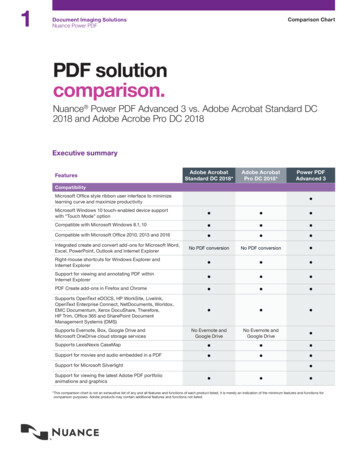
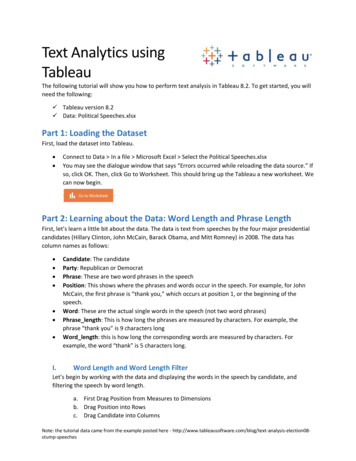
![[MS-XLSX]: Excel (.xlsx) Extensions to the Office Open XML .](/img/31/ms-xlsx.jpg)
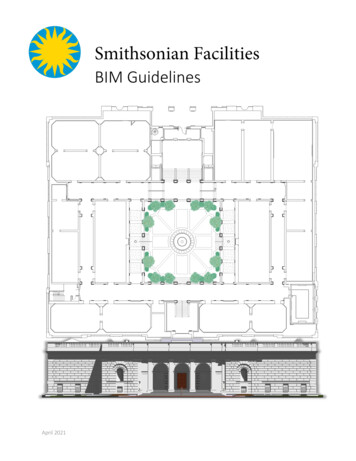
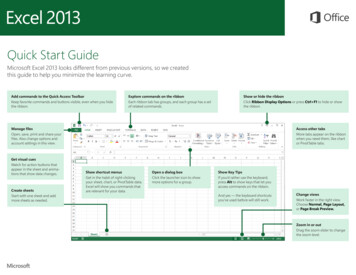
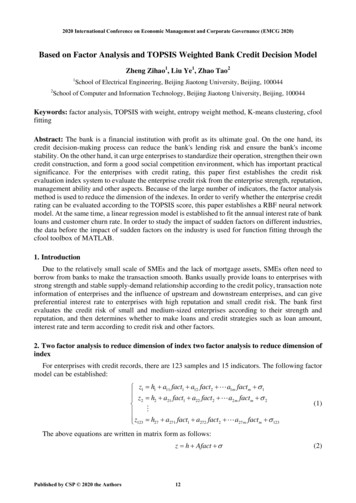


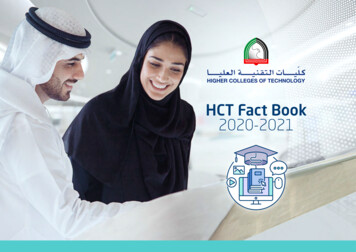
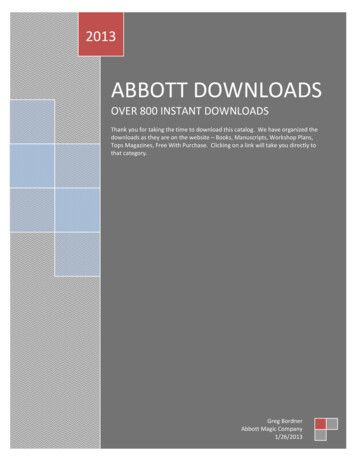
![2017 Fact Book.xlsx -[-EXCEL.EXE-]- - Northwest Arkansas Community College](/img/19/2017factbook.jpg)